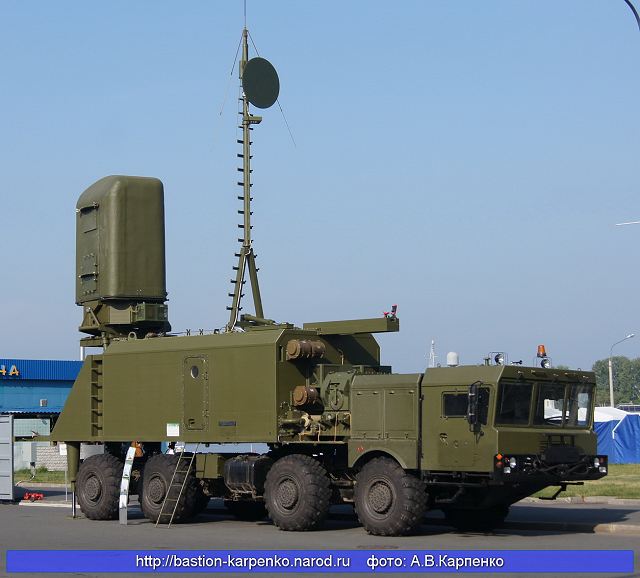Breaking news
Russia has developped a silo-based version of Bastion SSC-5 Stooge coastal missile system TASS 10602161.
| 2016
|
|
|||
|
Defence & Security News - Russia
|
|||
|
|
|||
| Russia has developped a silo-based version of Bastion SSC-5 Stooge coastal missile system. | |||
|
Russia’s Machine-Building Scientific and Production Association has developed a stationary version of the Bastion (NATO reporting name: SSC-5 Stooge) coastal defense missile system with a silo-based launcher, the association’s spokesman said on Friday, February 5, 2016.
|
|||
|
|
|||
 Russian Bastion (NATO reporting name: SSC-5 Stooge) coastal missile system Russian Bastion (NATO reporting name: SSC-5 Stooge) coastal missile system |
|||
|
|
|||
|
"We were developing the mobile and the stationary versions of the Bastion coastal missile system simultaneously. The stationary version is equipped with a silo-based launcher," the spokesman said.
"From our point of view, countries that occupy small areas and need to defend a limited coastal zone may be interested in this project. The mobile coastal missile system is more suitable for our country," the spokesman added. According to the spokesman, foreign customers are showing interest in the version of the Bastion coastal missile system with a silo-based launcher. However, no contract for its delivery has been signed yet. The stationary coastal missile system "features high combat survivability and efficiency amid strong electronic jamming and counter-fire. It can also launch Yakhont anti-ship missiles independently," the spokesman said. The silo-based version of the Bastion coastal missile system does not require serious target designation equipment owing to high characteristics of the Yakhont missile’s homing head. The stationary version of the Bastion coastal missile system comprises protective silo-based launchers, a control module, a protected command and control post, equipment for data exchange between the system’s weapons and the command and control post, an automated combat control system and maintenance equipment. The silo-based version of the coastal missile system does not allow the enemy to determine its coordinates and hit it with guided weapons. The system’s protective launchers defend its missiles from small-caliber munitions. |
|||
|
|
|||
 Radar for Bastion coastal defense missile system Radar for Bastion coastal defense missile system |
|||
|
|
|||
|
"The silo-based version of the coastal missile system can protect a sea area of up to 150,000 square kilometers [57,915 square miles] and a coast with a length of up to 600 kilometers [373 miles] from the enemy’s landing operations. The system can also protect the remote border of a political and administrative area as part of the single defense system," the spokesman said.
CEO of the Machine-Building Scientific and Production Association Alexander Leonov said earlier that Russia was offering the silo-based version of the Bastion coastal missile system armed with Yakhont missiles on the international market. The 3K55 Bastion coastal missile system is designed to eliminate single surface ships and vessels within assault units, attack groups and convoys at a distance of up to 300 kilometers (186 miles). The system can also hit ground targets. The Bastion coastal missile system is in service with the Russian Armed Forces. The system has been delivered to Syria and Vietnam. The Bastion coastal missile system was deployed on the Crimean coast in 2014. In September 2014, the Bastion coastal missile system was used to destroy a training target at a range of 90 kilometers (56 miles) in the central part of the Black Sea during maneuvers. |
|||
|
|
|||
|
© Copyright 2016 TASS. All rights reserved. This material may not be published, broadcast, rewritten or redistributed.
|
|||


























